To Penang With Love….
0The Penang Heritage Festival 2015 will be soon be upon us, mark your calenders 4th July to 7th July, book your flights and head north, for this year’s theme will leave you salivating.
‘EAT RITE: Rituals Foods of George Town’, Heritage Celebrations 2015 puts the focus on the city’s festive heritage with emphasis on the special foods made to celebrate each occasion. More than just a source of nutrients, such foods are rich with significance and symbolism that express the beliefs and hopes shared by the community.
The Brownies had a heritage blast last year and had their fill of the landmarks of Georgetown and the stories recounted here in:
To Penang With Love.
by Simone Lee
Penang and George Henry Brown (1826-1882)
Though at opposite ends of the Malayan peninsula, the islands of Penang and Singapore share common ground in culture and history, and even identity. Last year (2014) the Brownies set out exploring the connections with Singapore’s past while celebrating the Penang Heritage Festival in commemoration of George Town’s listing as a UNESCO Heritage site.
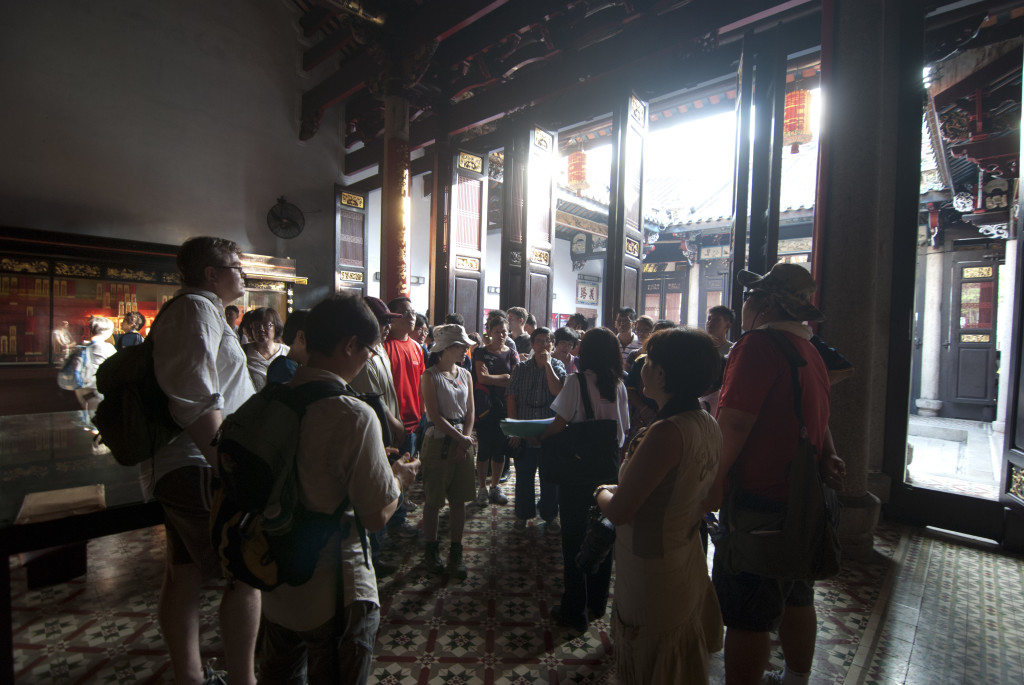
Brownies on a heritage tour during the Penang Heritage Festival. Photo taken at the Han Jiang Ancestral Temple
While the Bukit Brown Cemetery volunteer guides were in Penang, they paid homage to the person that the cemetery was named after. George Henry Brown arrived in Singapore in the 1840’s from India and bought parcels of land around Upper Thomson including Mount Pleasant, which he named because of its pleasant surroundings. Although Mr.Brown did not buy the exact piece of land that now holds Bukit Brown cemetery, his name was adopted as the locals referred to the hills in the area as “Kopi Sua” or Brown’s hill ( *kopi literally means coffee but is here referred to as brown for its colour, due to limitations in the dialect vocabulary.) In the 1880’s, Mr.Brown sailed to Penang following an accident with a tapioca machine on his estate in Singapore, which severely injured his arm. He was there to recuperate in his brother’s home but complications from injury set in and he passed away. He was buried at the Old Protestant Cemetery in GeorgeTown.
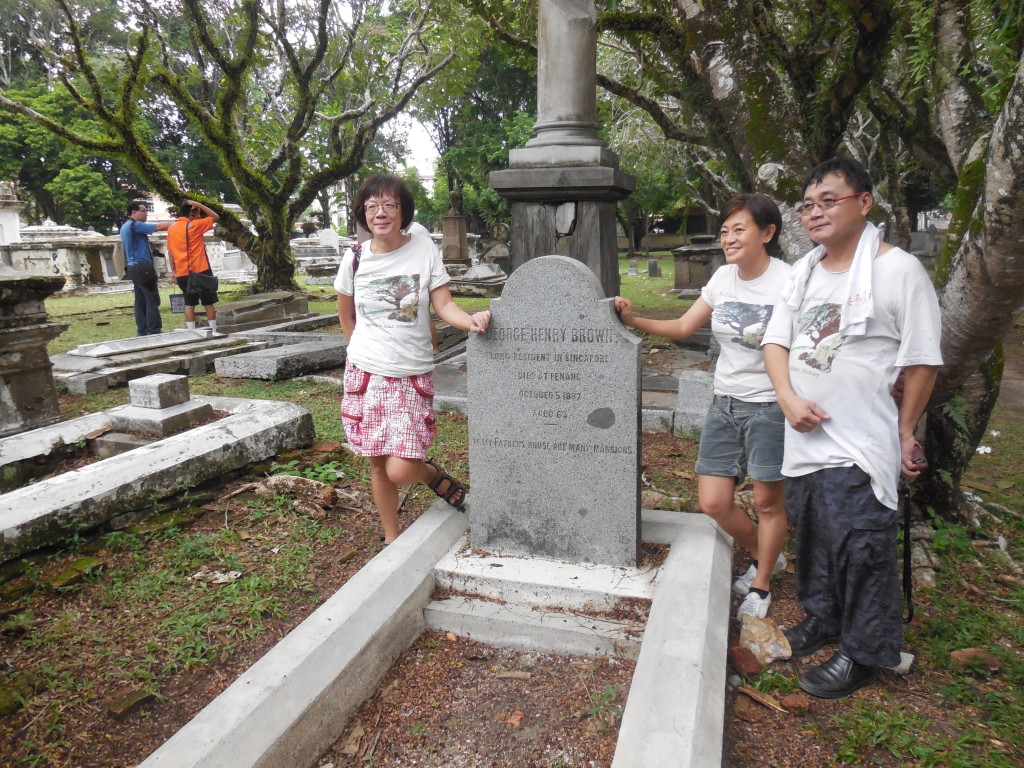
A moment of reflection and wonder for the Brownies at George Henry Brown’s resting place. Picture by Cuifen
The Old Protestant Cemetery is the oldest christian cemetery in Penang. It is where Sir Francis Light, the founder of colonial Penang, was also laid to rest. Thomas Leonowens, the husband of Anna Leonowens is also buried there. After the death of her husband, Anna moved to Singapore and with George Brown and Tan Kim Ching’s (son of Tan Tock Seng) recommendation, she became the English tutor to the children of King Mongkut in Siam. Her story is immortalized in various versions of The King and I (or Anna and the King).
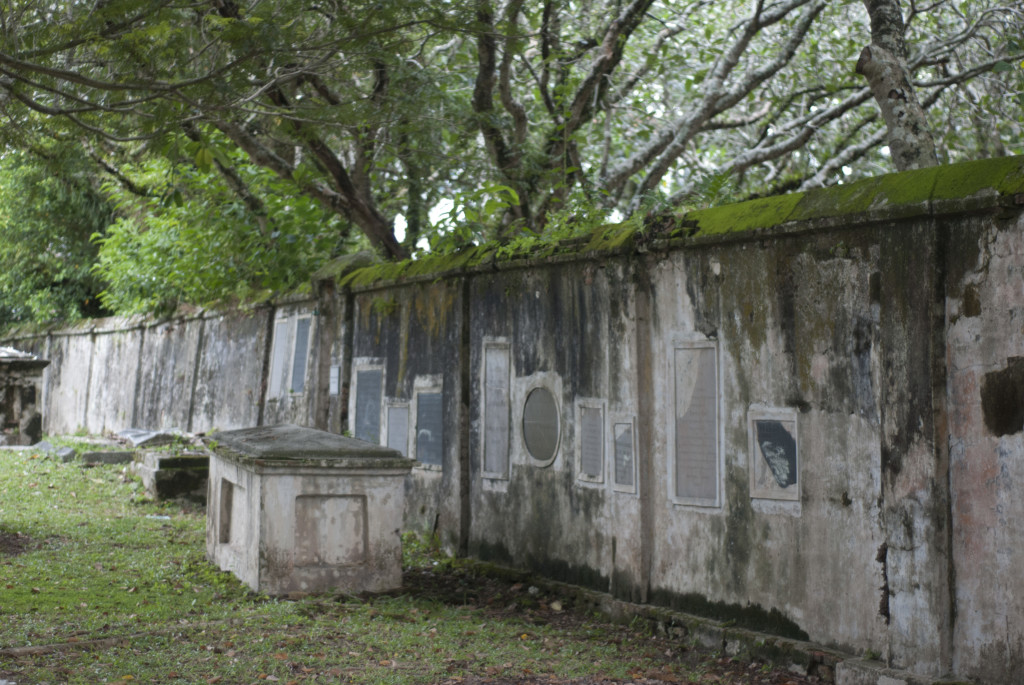
Some of the tombstones from tombs damaged by WW2 air raids were salvaged and installed along the walls of the cemetery.
Kapitan Chung Keng Quee (1821-1901) and the Tan Kim Ching (1829-1892) connection
High on the Brownie itinerary, was the hunt for the biggest tomb in Penang (and possibly in Malaysia). The immensity of the space where life sized statues guard the grand tomb of Kapitan Chung Keng Quee is a jaw-dropping experience. Kapitan Chung or Ah Quee was a leader in the Chinese community and was known for his generous contributions. He was also the headman of the Hai San secret society who led the group through the 4 Larut Wars and supported the Pangkor Treaty. The fierce fighting over the booming tin mining territories in Taiping (formerly known as Larut) involved members of the Ghee Hin and Hai San secret societies from as far as Singapore. To end the bloodshed, Prince Abdullah who himself was embroiled in a succession crisis and was sympathetic to the Ghee Hin faction, traveled to Singapore to seek help from Tan Kim Ching. As a prominent leader in the Chinese community Tan brought to bear his influence in the matter and called on the British administrators who had charged of The Straits Settlements to intercede and broker a peace agreement. The rest as they say is history. The Pangkok Treaty ended hostilities with a truce and Larut was then named Taiping – 太 (tai – ‘great’) and 平 (ping – ‘peace’). More on Romancing Taiping here.
Back in Georgetown, Penang, Kapitan Chung was also known for his expansiveness and exquisite taste in architecture and all things Chinese culture and history. His grand townhouse in Georgetown showcases some of the finest artisan work of that time imported from both China and Europe and is now opened to the public as the Penang Peranakan Mansion. Next to his townhouse is Kapitan Chung’s private temple. A life-size bronze statue of Chung stands in this temple.
Khoo Tiong Poh (1830-1892) and Tiong Bahru
Resting at a corner of the Jalan Free School roundabout is buried the man who is named for Tiong Poh road in Singapore, Tiong Bahru. Khoo Tiong Poh was a Chinese merchant and ship owner. He owned the shipping and trading company, Bun Hin & Co at Malacca Street, in Singapore, and within a few years opened branches in Penang, Hong Kong, Amoy and Swatow, making it the largest and leading shipping enterprise in the Straits. He was also known for his philanthropic deeds which included donations made to cemeteries and temples in Penang, and to the coastal defence and flood relief in China, earning him the title Dao Tai 道台 by the Qing government.
After a prolonged illness, Mr.Khoo passed away in Singapore and his body was shipped to Penang to be buried at his plantation. His son, Khoo Phee Soon, who resided in Singapore till his eventual death is buried in Bukit Brown Cemetery.
Khoo Kongsi
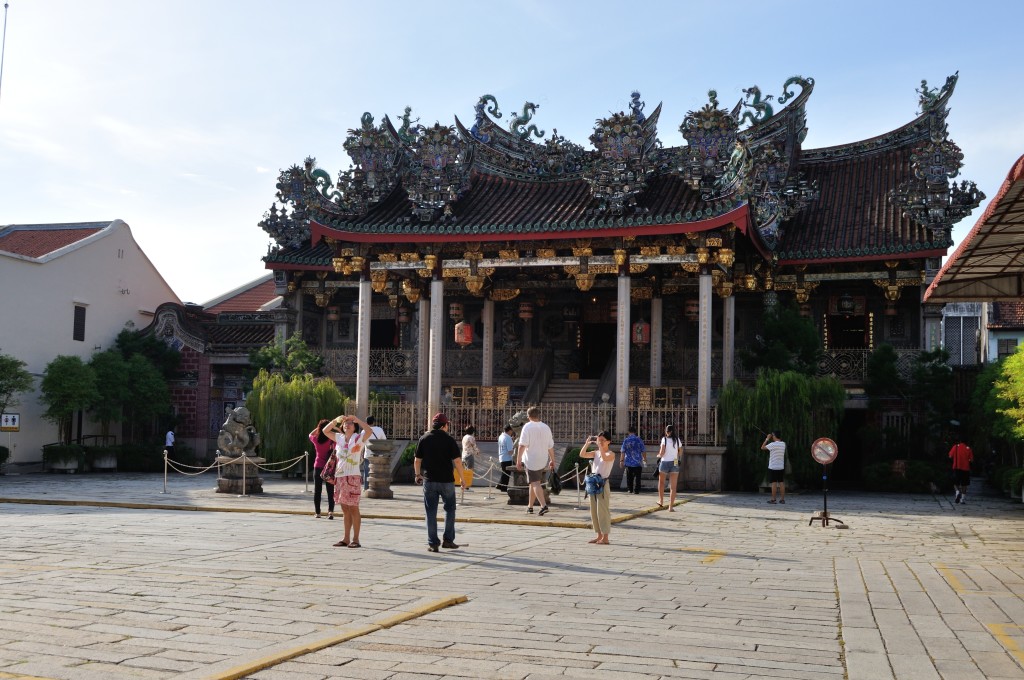
Brownies approach the grandest temple in Malaysia, Leong San Tong Khoo Kongsi clan temple (photo by Ang Yik Han)
No trip to Penang is complete without visiting the Leong San Tong Khoo Kongsi. The clan association which has opened it doors to the public as a living museum, displays the rich history behind the Khoo lineage, the grand architecture, and the elaborate Chinese decorations, paintings and carvings. It also showcases prominent pioneers who made their names in the society and contributed generously to the community in Malaya and Singapore. These men include Khoo Seok Wan, Khoo Teck Phuat and his father, Khoo Yang Tin.
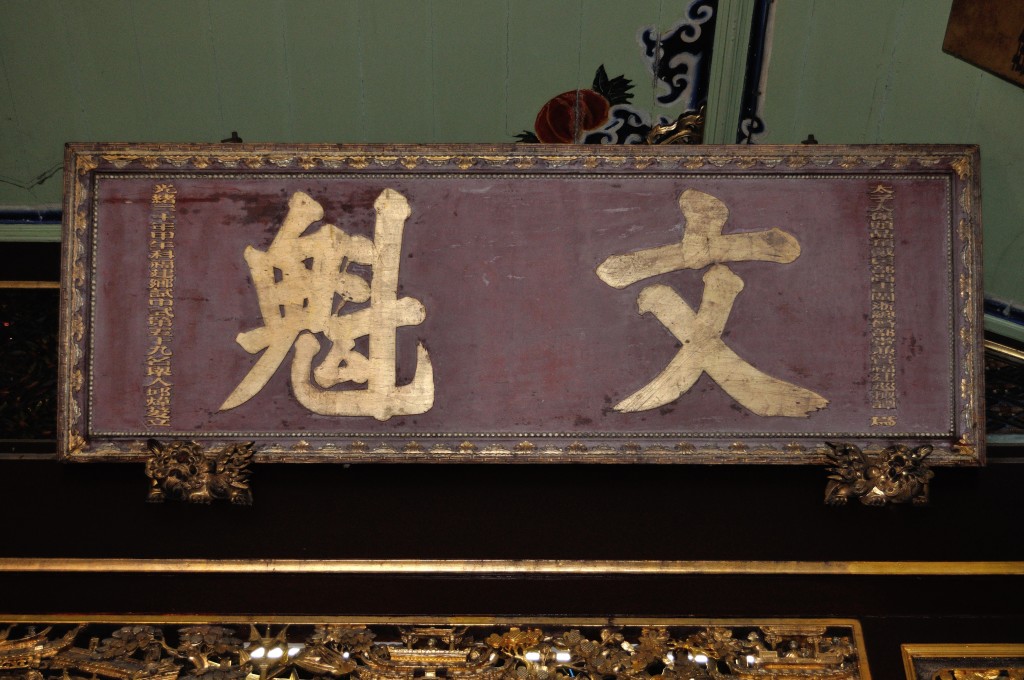
A plaque of recognition in the ancestral hall bearing Khoo Seok Wan‘s name
Over the years, the Leong San Tong has gone through a number of restorations. Over the span of 3 years (1999-2001), the biggest restoration exercise saw conservation specialists and craftsmen from China and India, flown in to work on restoring and reinstalling parts of the building with materials that were traditionally used. These included traditional organic paint, and terracotta tiles which were imported from China. The massive restoration brought Leong San Tong’s shine back to its authentic glory and garnered the National Heritage Restoration Award in 2000, and helped sealed Georgetown’s UNESCO World Heritage status in 2008.
For the few short days, the Brownies visited a few other sites in Penang which had links to Singapore but yet to explore some completely, saving them for future Brownie adventures.
=================================================
Acknowledgements :
We are grateful to members of the Penang Heritage Trust for their hospitality and guidance in our trip. Special thanks to Salma Khoo, Lim Giak Siang, Clement Liang and Joanna Khaw.
A special mention is the place the Brownies called ‘home’ for 3 nights; the Ren I Tang Heritage Inn. The shophouse once housed the oldest traditional chinese medical practice in South East Asia, Yin Oi Tong, for 124 years. It went through a 2-year restoration process which retained much of the original features, including the air-well, wooden staircase and roof tiles. Today, one can find himself soaking in Ren I Tang’s history at the comfort of his room, while sipping a cuppa at the bistro or just bybrowsing through the museum.
About the Brownies and their off-site sojourns:
The Brownies’ yearning to connect to history and thirst for adventure, brings them to various locations within and beyond Singapore. The objectives of these retreats are, to study the historical and cultural links to Singapore, and to strengthen kinship amongst the brownies.
(Brownies are the volunteers who conduct regular weekend guided walks and independent research on heritage, habitat and history of Bukit Brown Cemetery.)
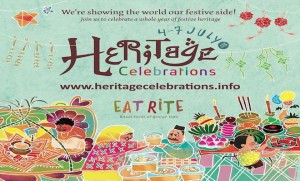
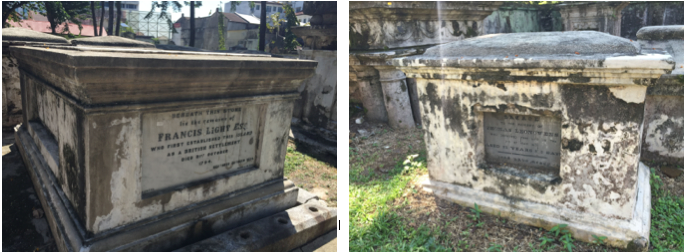
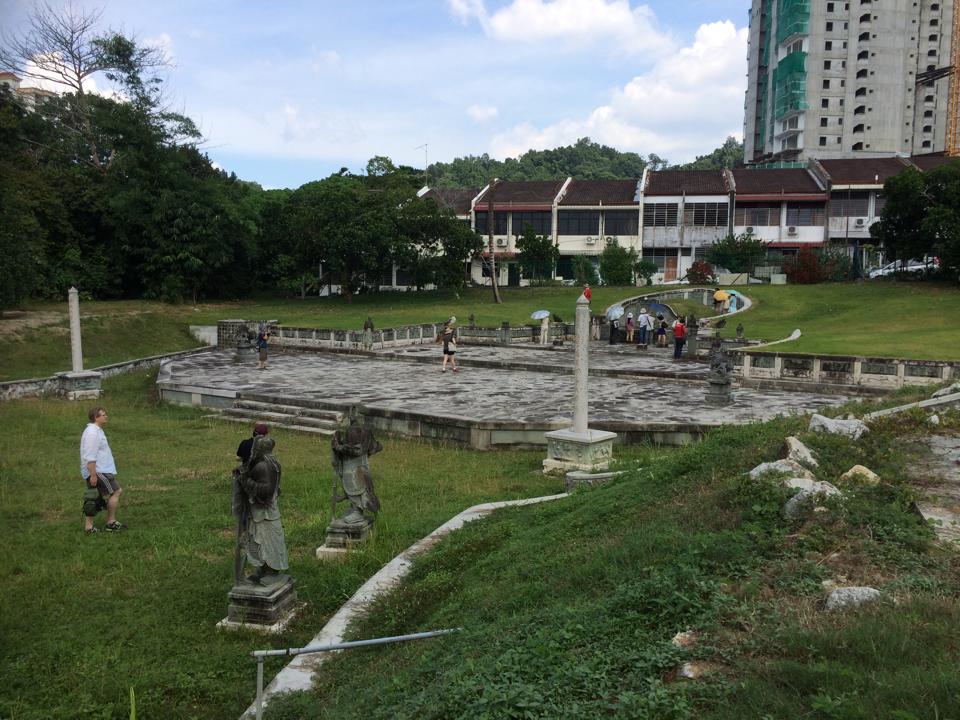
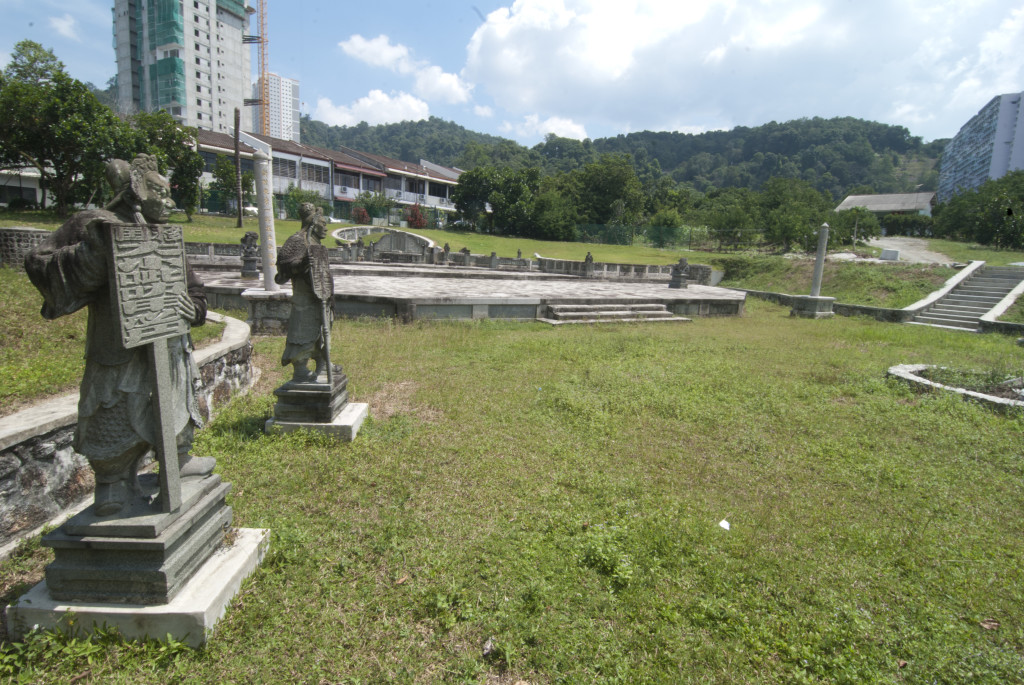
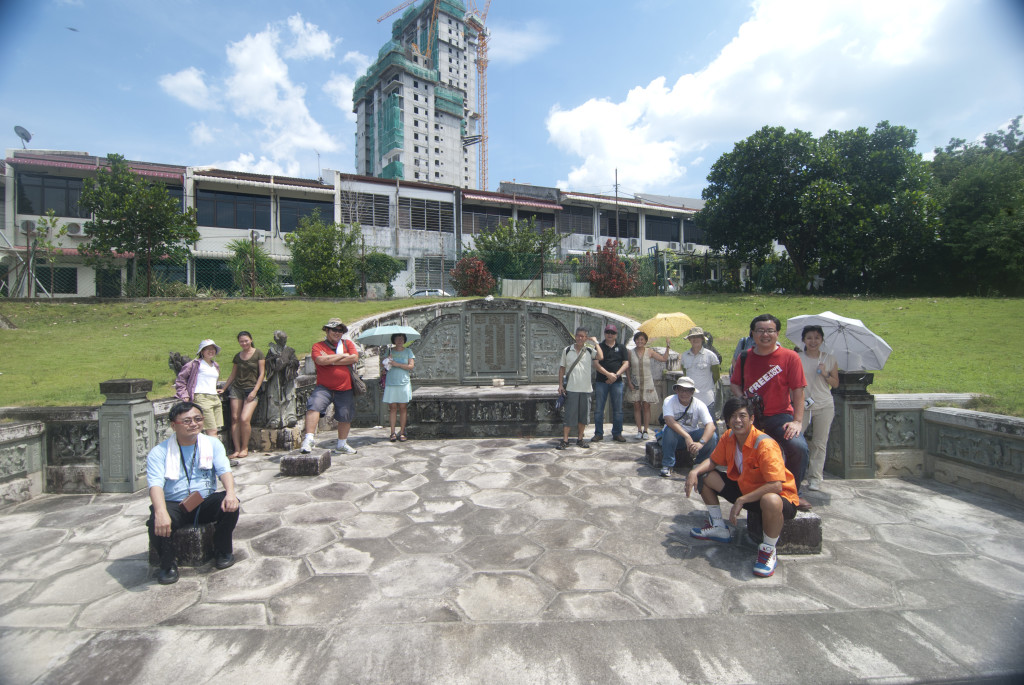

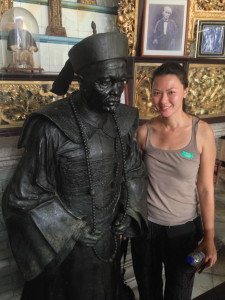
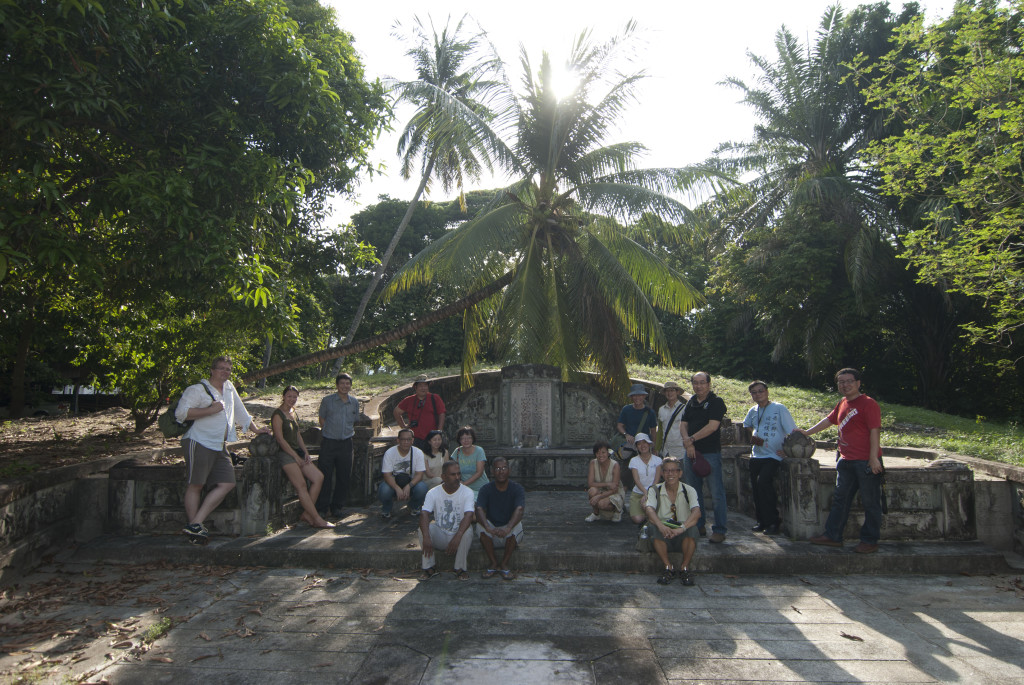
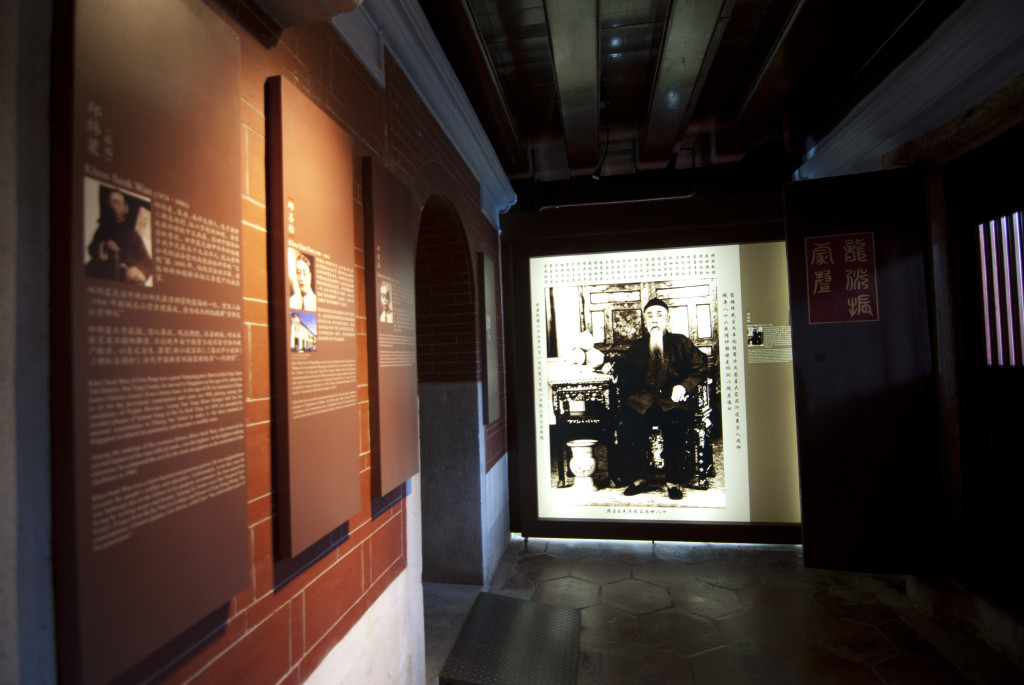
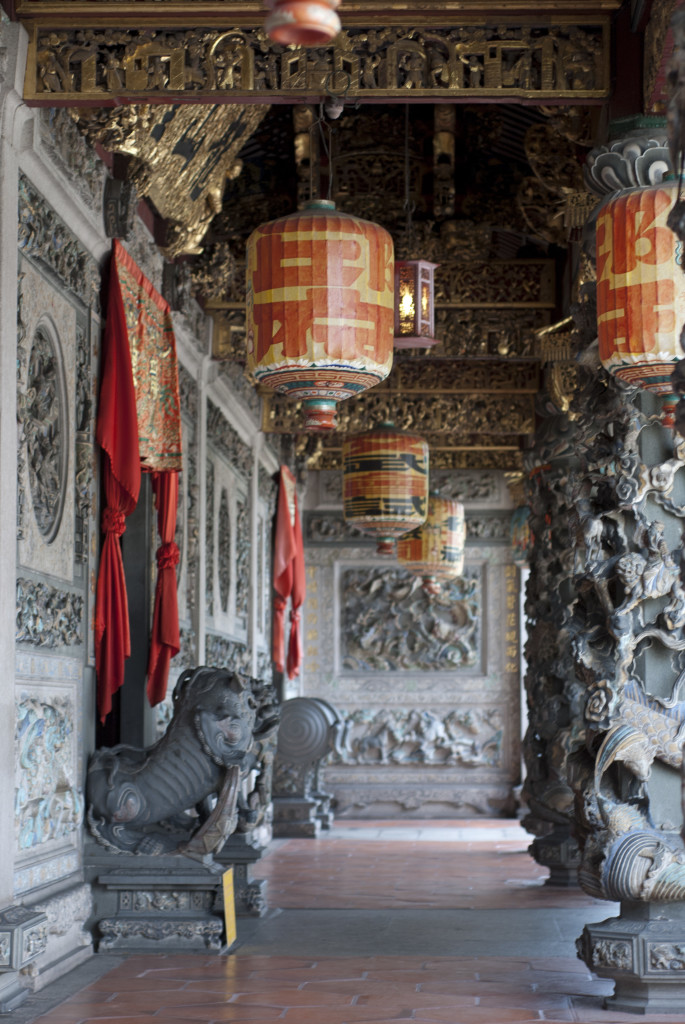
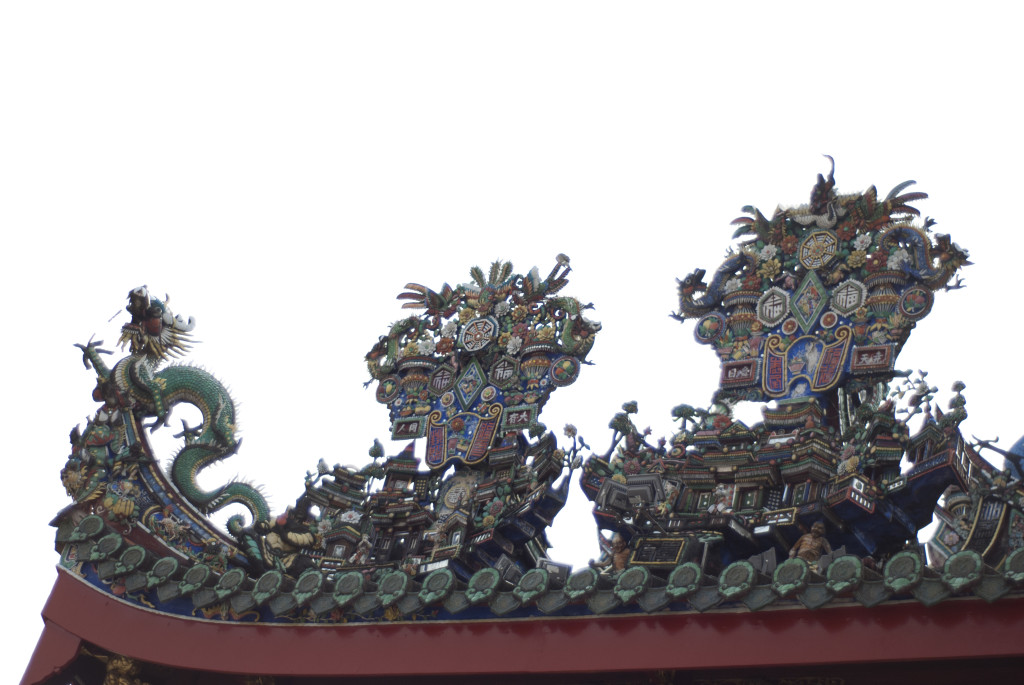

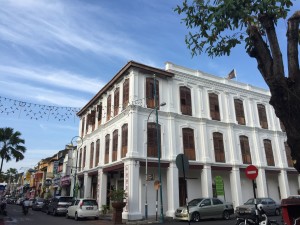

Comments